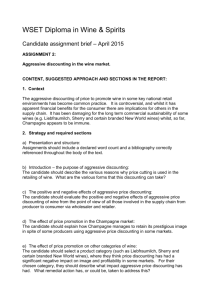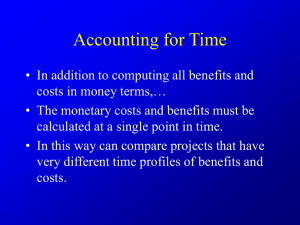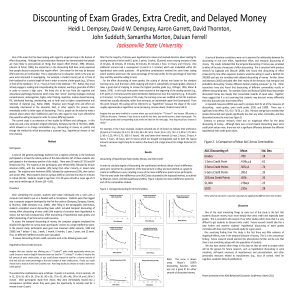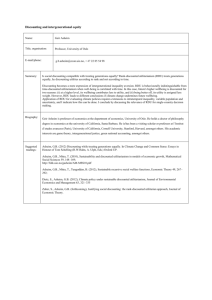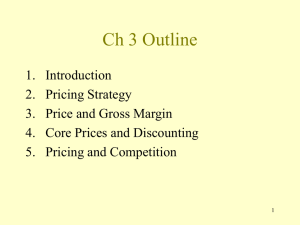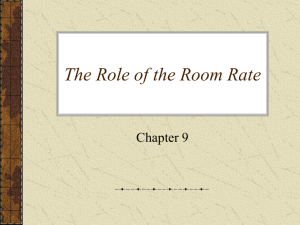Bill Discounting - Ignite Academy
advertisement
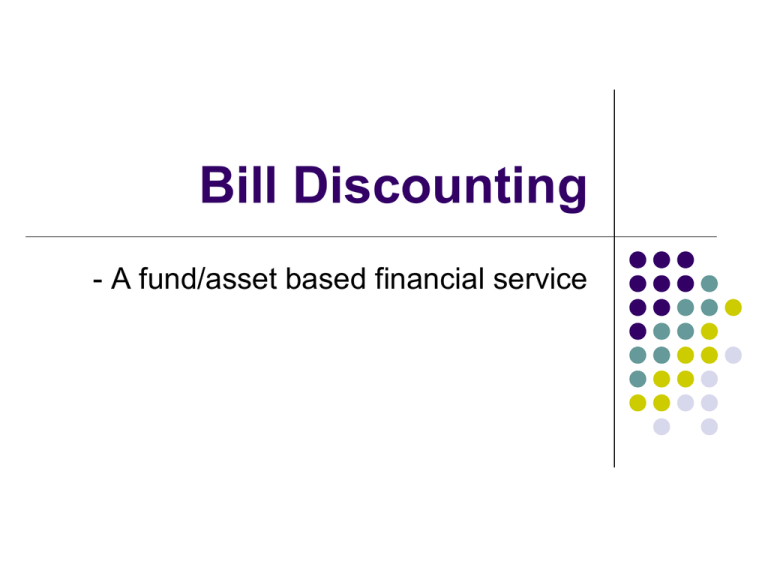
Bill Discounting - A fund/asset based financial service Concept – Bill of Exchange Bill of exchange, is an instrument in writing which is an unconditional order to pay a certain amount of money to a specified person. How B/E is to be created ? Discounting of B/E The seller who is the holder of a accepted B/E has two options : 1. 2. Hold on the B/E till maturity and then take the payment from buyer. Discount the B/E with discounting agency. Note : However the option (2) is much more attractive as seller gets ready cash Discount : Seller can take the accepted B/E to a discounting agency and obtain ready cash. The act of giving accepted B/E for ready money is call discounting the B/E. The difference between ready money paid and the face value of the bill is called the discount. Types of Bills 1. Demand Bill : Payable immediately 2. Usance Bill : Time bill 3. Documentary Bill : Accompanied by documents 4. Clean Bill : Not accompanied by any documents Advantages : To banks Safety of Funds : Bearing signatures of two parties Profitability : Discount is front-ended, so as yield is much higher than loans Even out Inter-bank Liquidity Problems : Stabilized the fluctuations in the call money market Processing - Credit Assessment Discounting agencies will do the appraisal of the customer. Credit limit will fix up by discounting agencies The credit limits are based on following considerations : 2. Credit worthiness of drawer (client) Credit worthiness of drawee and dishonour if any 3. Nature of Customer’s industry. 1. Once discounting agencies, gives approval for bill discounting, following documents are submitted: Invoice Challan Receipt of goods (acknowledge by buyer) Promissory Note Railway Receipt/ Truck Receipt Post dated cheque for interest amount Precautions – By Banks, NBFCs Goods covered by documents are those in which the company is dealing The amount of bill should match with business turnover of the company. Where discounting agencies is operating or have a branch office. The credit report on the drawee is satisfactory The goods covered under the bill are not of perishable in nature. How to deal in case of Default ? Cycle of Liabilities in bill discounting transaction : Drawee Drawer Bill Discounting Agencies In case of default, bill discounting agency can lodge the complaint under Negotiable Instrument Act. In real life, it is preferable to have negotiation and compromise. Loopholes/ Grey Areas Who are the prime users of Bill Discounting facility in India and which are concerns? 1. Kite Flying : The practice of discounting accommodation bills are known as kite flying. 2. Supply Bills : B/E drawn by Suppliers/ Contractors to Government. It depress the level of cash flow in the bill market. Reduced Supply 3. Several corporate house do not accept B/E drawn on them. Accepting such bills is somewhat damaging their prestige. Such attitude discourage the culture of using discounting bills. Bill Market Scheme, 1970 Recommendation made by Dahejia Committee. New bill market scheme was introduced to facilitate the re-discounting of eligible B/E by banks to RBI Salient Features of Bill Market Scheme 1. 2. 3. 4. Eligible Institutions Eligibility of Bills Procedure for Rediscounting Other Additions/developments in this scheme Eligible Institutions : 1. Licensed scheduled banks and those which don’t require license. Above scheduled banks are eligible to rediscount bills of exchange with RBI. Eligibility of Bills 2. Drawn or payable in India Bearing two or more signatures, one of which should be of bank and B/E maturing : Export of goods from India, within 180 days Any other case, 90 days from the purchase The scheme is eligible for only genuine trade bills arising out of genuine sale of goods & if 90-120 days ? Procedure for Rediscounting : 3. At maturity RBI gives back re-discounted bills to banks against the payment. Maturity period less than 30 days can not be rediscounted with RBI. Additions/Developments in this scheme: 4. Setting up Discount and Finance House of India (DFHI) Remission of Stamp duty The re-discounting facility from RBI has gradually slowed down and encouraged rediscount with one another bank and approved financial institutions (e.g. LIC, GIC, ICICI etc.) Present Scenario To stop misuse RBI has issued guidelines which are as follows : Bill covering purchase of raw material or sale of goods should be discounted by banks. Kite Flying/Accommodated bills should never be accepted. No fund facility should be provided by banks outside the consortium arrangement The banks should not re-discount the bills earlier discounted by banks with NBFCs. As a result, there is drastic decline in bill discounting transaction. Presently, the monthly turnover on an average is Rs.100 crore and Rs. 800-900 crore per year. The ban on re-discounting also resulted in decline of business of NBFCs.

